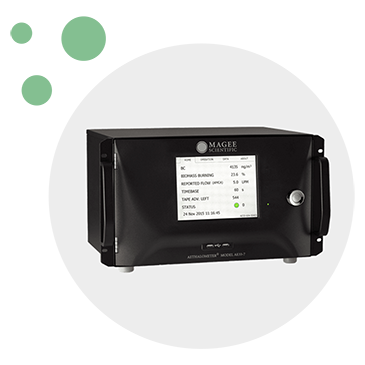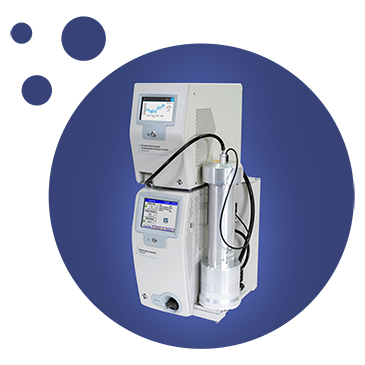Each ASCENT site is equipped with a suite of advanced aerosol instrumentation for real-time measurements of fine aerosol chemical composition and properties: Aerosol Chemical Speciation Monitor (ACSM, non-refractory aerosols), Xact (trace metals), Aethalometer (black/brown carbon), and Scanning Mobility Particle Sizer (SMPS, aerosol number size distribution and concentration)
Aerosol Chemical Speciation Monitor (ACSM)
The ACSM (Aerodyne Research, Inc.; Ng et al., Aerosol Science and Technology, 2011)) provides continuous, quantitative measurements of mass concentration and composition of non-refractory aerosols, which dominate PM2.5. It was specifically developed for long-term, autonomous, and routine monitoring of ambient aerosols. Aerosols are thermally vaporized and detected with electron impact ionization and mass spectrometry, using a time-of-flight mass spectrometer model (ToF-ACSM, mass resolution 300). Aerosol species measured include organics, nitrate, sulfate, ammonium, and chloride. The ACSM outputs time-resolved mass concentration of each aerosol species and mass spectra. It also provides the unique capability of separation and quantification of different organic aerosol components, including subtypes of hydrocarbon-like OA (surrogate for primary OA, POA) and oxygenated OA (surrogate for secondary OA, SOA), which is not achievable from filter samples.


Xact
The Xact 625i (Sailbri Cooper, Inc.) is designed for high time-resolution multi-metals monitoring of ambient fine aerosols. The system uses reel-to-reel filter tape sampling and nondestructive energy dispersive X-ray fluorescence (EDXRF) analysis. The instrument features automatic quality assurance, alarm, and control and provides automatic daily XRF calibration drift checks.
Aethalometer
The AE33 aethalometer (Magee Scientific, Inc.) provides simultaneous measurement of attenuation of transmitted light at wavelengths of 370, 470, 520, 590, 660, 880, and 950 nm. Black and brown carbon (BC and BrC, respectively) concentrations are estimated based on the absorption and the BC mass absorption coefficient, both at 880 nm, as well as the wavelength dependence of absorption. The multi-wavelength capability facilitates source apportionment analysis, such as discerning fossil fuel from biomass combustion including forest fires, prescribed burns, and wood burning stoves/fireplaces because of the high contribution of BrC to absorption in these emissions. The AE33 features built-in programs for routine zeroing and checks of stability and leakage.


Scanning Mobility Particle Sizer (SMPS)
The 3839W89 SMPS (TSI, Inc.) consists of a Differential Mobility Analyzer (DMA) and a Condensation Particle Counter (CPC), providing real-time measurements of size distributions of aerosols in the 10-1,000 nm size range (mobility diameter). A water-based CPC (model 3789) is selected for its low maintenance, where distilled water is used as a convenient and safe working fluid. The SMPS has a wide concentration range of up to 107 particles cm3.


